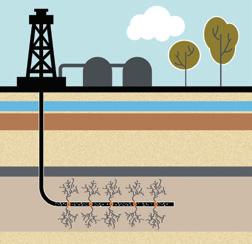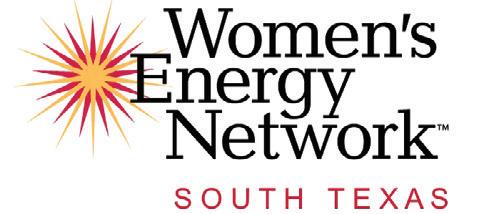
8 minute read
Global Investment Slowdown Set to Hike Oil Prices and
Global Investment Slowdown Set to Hike Oil Prices and Cause Undersupply of 5 million bpd in 2025
Special to SHALE
Advertisement
The COVID-19 pandemic will leave not only short-term, but also long-term, scars on the oil market. Even though the world is currently facing what is arguably the largest oil glut ever recorded, the tables will turn dramatically in coming years. The lack of activity and investments currently planned by cost-conscious E&P firms, combined with an inevitable rebound in global oil demand, is set to cause a supply deficit of around 5 million barrels per day (bpd) in 2025, Rystad Energy calculates, with prices seen topping $68 per barrel to balance the market.
In our base case scenario, global demand for liquids in 2025 will reach around 105 million bpd. Before the COVID-19 pandemic, Rystad Energy expected supply to slightly exceed demand. However, due to the steep curtailment of investments and activity that the current crisis has brought this year, Rystad Energy now estimates that the downcycle in the upstream industry will remove about 6 million bpd from production forecasts for 2025.
To fill this gap, Rystad Energy believes that some of the core OPEC countries, like Saudi Arabia, Iraq and UAE, will be able to ramp up production. In total, these countries might fill 3 to 4 million bpd of this gap. The remaining shortfall will most likely be filled with volumes from U.S. tight oil. To achieve this, prices may move above our current base case, which currently stands at an average price of $68 per barrel in 2025.
“The current low oil price has tightened the medium-term supply and demand balance considerably. Despite high growth in tight oil, oil production outside the OPEC Middle East countries is expected to stay flat over the next five years. As demand is expected to recover, the core OPEC countries will need to increase their supply significantly or the market will face even higher prices than our base-case forecast,” says Rystad Energy Head of Upstream Research Espen Erlingsen.
Learn more at Rystad Energy’s UCube.
Global E&P activity is poised to fall dramatically this year as upstream companies try to cope with the challenging market conditions, resulting in conventional project-sanctioning activity falling to a 40-year low and tight-oil investments dropping by almost 50% this year. The impact of the lower activity levels varies depending on the supply segment. For tight oil (including NGL) the impact on production is rather immediate, and we have reduced our 2020 forecast by close to 1.9 million bpd. The dramatic reduction in new tight-oil wells will also have a long-term impact, as fewer wells will be available for production. For 2025 our total tight-oil production forecast is revised to 18 million bpd, or 2.7 million bpd lower than our pre-crisis estimate. For more analysis, insights and reports, clients and non-clients can apply for access to Rystad Energy’s Free Solutions and get a taste of our data and analytics universe.
About Rystad Energy
Rystad Energy is an independent energy research and business intelligence company providing data, tools, analytics and consultancy services to the global energy industry. Our products and services cover energy fundamentals and the global and regional upstream, oilfield services and renewable energy industries, tailored to analysts, managers and executives alike. Rystad Energy’s headquarters are located in Oslo, Norway with offices in London, New York, Houston, Aberdeen, Stavanger, Moscow, Rio de Janeiro, Singapore, Bangalore, Tokyo, Sydney and Dubai.
LET US STOP YOUR HIGH CREDIT CARD
CHARGES AND MONTHLY PAYMENTS. Credit card processing fee 0% Transaction fee 0%



.com swype GREEN
No hidden fees $45 flat fee per month 210-240-7188 www.swypegreen.com
LWD vs. Wireline Logging: Which Should You Choose?
By: Anye Ndefru, SETC Senior & Employee Development and Engagement Manager, Schlumberger
In oilfield drilling operations, “logging” is the process that enables the operators to collect data about the formation through which they are drilling. The graphical representation of the geological data acquired in the process is called a log.
Before drilling begins, operators must decide which type of data to acquire (drilling mechanics, resistivity, density, porosity, permeability, Gamma Ray, etc.), and determine how the geological data will be acquired: on wireline or while drilling.
In wireline logging, an electrical cabling system is used to lower tools or measuring devices into a borehole, that then collect and transmit wellbore properties data. The wireline logging operations are carried out after the drilling operation has been completed.
Alternatively, “logging while drilling (LWD)” technologies enable data collection in realtime or in a recorded mode as the drilling operations are in process. The LWD tools are made up to the Bottom Hole Assembly (BHA), along with MWD (measurement while drilling), RSS (rotary steerable system), and other “dumb” iron (non-smart equipment).
Drilling operators generally agree that there are numerous benefits of running LWD technologies over wireline:
• LWD tools are heavier, tougher and more robust • The tools acquire data continuously during the drilling operations without interruption (they are transparent to drilling) • Most LWD equipment has no directional logging limitations: the tools can be run in high dog-leg and high inclination angles

About the author: Anye Ndefru is an Employee Development and Engagement Manager within the Drilling and Measurement (D&M) Technology Lifecycle Management sub-business unit of Schlumberger; the world’s largest oilfield services company. Mr. Ndefru, in his current role, manages engagement initiatives as well as the training and development planning of engineers and technicians of the Sub-Saharan Africa region, an area that spans across 37 countries. Prior to this role, he worked in field drilling operations, then in operations support, and finally, at Houston Formation Evaluation technology center; Schlumberger’s biggest worldwide technology center. During his assignment at the technology center, he was responsible for knowledge and process management, internal technical communications and global technical support to D&M business unit operations. While in this role, he also received the SETC recognition for his exceptional technical expertise and leadership with respect to matters relevant to business systems and processes development, organizational change management, quality and compliance management, continuous improvement and technology lifecycle management.
• Acquired LWD data serves real-time well placement and other decision-making purposes (imagine that you want to remain within, above, and below a specific reservoir while drilling; the only optimal solution is one that will enable your team to steer the well according to the position of the reservoir’s bed boundary) • LWD measurement is as accurate and repeatable as wireline logging • LWD eliminates the need for post-drilling logging, hence saving rig time and cost, and avoiding safety risks associated with operations and well integrity • There is no well trajectory or inclination restriction on running
LWD tools: you can acquire data up to your end depth, and at times ahead of the bit in vertical, S-shape, and horizontal wells.
With the emergence of LWD technologies, many people anticipated the death of wireline formation evaluation in drilling operations. However, multiple renowned oilfield service companies continue to invest in wireline technologies to offer both formation logging approaches.
Why is wireline logging still viable?
Despite the many benefits of LWD, the system still has drawbacks that must be weighed in any decision about which logging platform to use. Significantly, the data density in real-time for LWD is lower than wireline due to MWD data transmission rate (telemetry), which might be a deal-breaker for certain operators. Power could also be a problem for some, as LWD tools are either powered with batteries, by an MWD tool, or by a power section of the tool that generates its own power from a mud turbine. Finally, downlinking capabilities are somewhat limited with LWD. LWD services are often also priced higher than wireline.
Nevertheless, complex well trajectories and deeper reservoir targets increase well integrity constraints and require a controlled rate of penetration (ROP). The controlled ROP favors the acquisition of good data density during the drilling process. Recent developments with wired drill pipes now enable very high telemetry rates, extend downlink capabilities and offer a whole new suite of bottom hole sensorial while drilling measurements.
LWD technologies may not yet offer (or may be experimenting with) some wireline services such as sidewall coring, formation imaging, cement-bound logging and formation sampling. Yet, whenever the measurements are available on wireline and while drilling, I will strongly recommend using LWD services to maximize operational safety, improve the real-time drilling decision-making process, identify and mitigate well integrity challenges efficiently, optimize the well placement, and minimize the overall cost of well construction. In my experience, when I have a choice, I choose LWD.
*Images of wireline and LWD tools available in Schlumberger equipment catalog at www.slb.com
connect. share ideas. discuss.

SHALE Oil & Gas Business Magazine is an industry publication that showcases the significance of the South Texas petroleum and energy markets.
SHALE’s mission is to promote economic growth and business opportunity that connect regional businesses with oil and gas companies. It supports market growth through promoting industry education and policy, and it’s content includes particular insight into the Eagle Ford Shale development and the businesses involved. Shale’s distribution includes industry leaders and businesses, services workers and entrepreneurs.










